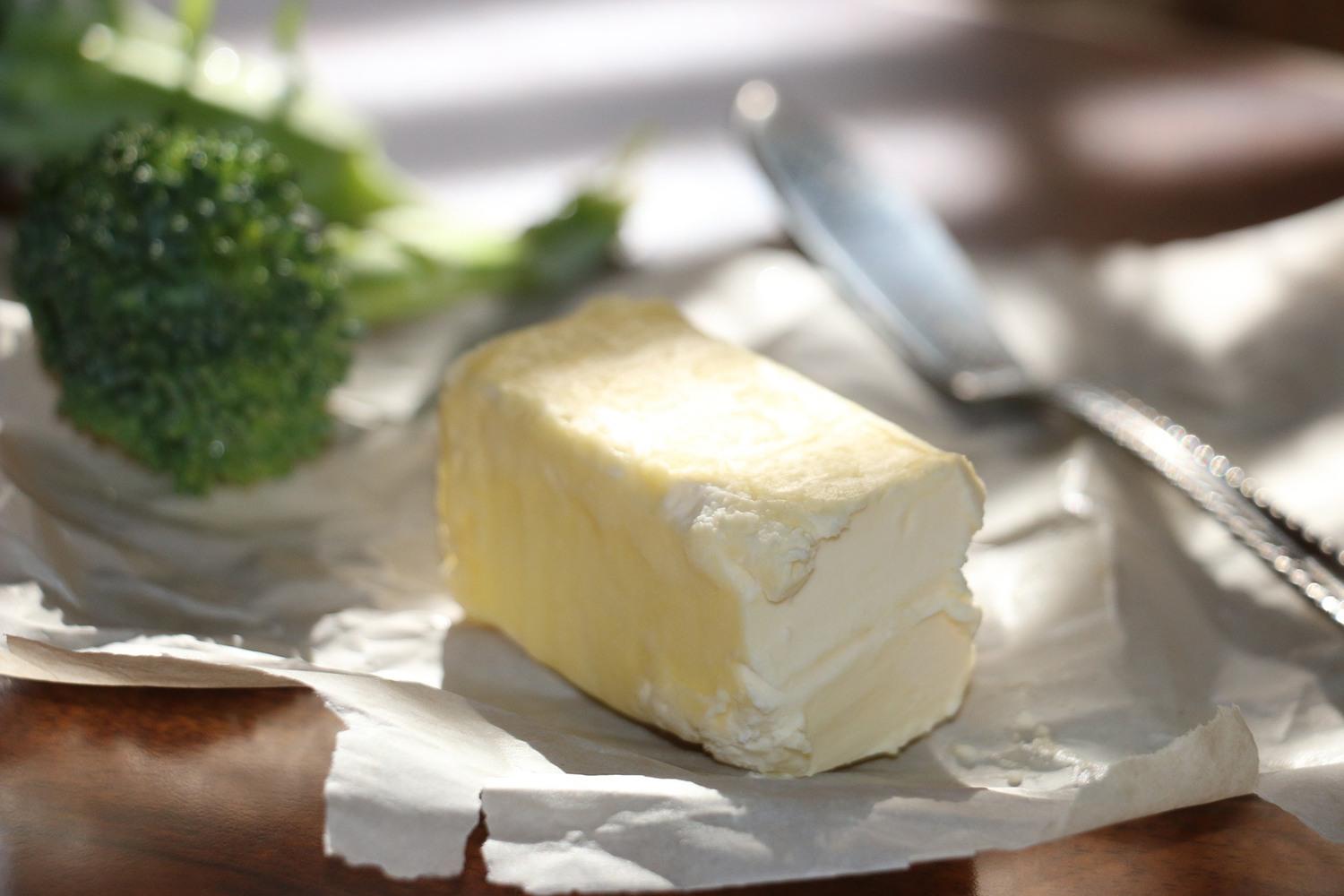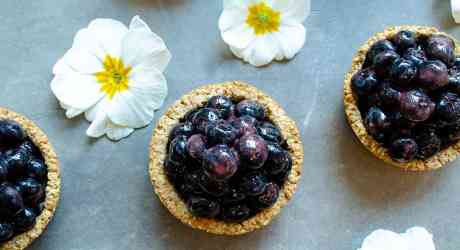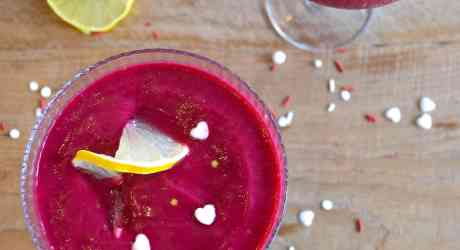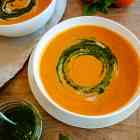Cultured Butter

Butter is making a serious comeback as science tells us that some fat — even saturated — is good for us. And when I say science, I’m talking about big meta-analyses that are pointing to the health benefits of some fat, not just little one off studies. In fact, we recommend butter as one of our top fats to cook with at high heat (if you’re not sold on butter yet, it’s ok: we also recommend ghee, coconut oil or cold/expeller-pressed canola oil for high temperature cooking).
Cultured butter, interestingly, is starting to make an appearance at some of my favourite restaurants. I love when the culinary and science worlds are paralleling each other, without even knowing it! Cultured butter is a little tangy, and has a light, whipped texture. It’s also brimming with probiotics for the gut- and brain-loving aspect (see, brain food is anything BUT boring).
Our cultured butter is super easy to make, and you can choose your own adventure as far as how tangy you make it (just let it culture less for less tang and more for super tang). And because I am so passionate about the gut-brain axis, I thought why not load it with even more probiotics — so we added miso (fermented soy, non-GMO of course) to it. Not feeling the soy, even if fermented? Simply omit it and add 1 tsp of sea salt instead!
Serve your cultured butter with real sourdough bread (also chock full of probiotics) for a real gut-brain party that actually feels like a party (this is “white bread and butter” we can get behind … our clients LOVE this part of their NeuroT Rx and you should, too!)
- 1 quart whipping cream (unpasteurized and organic, preferably)
- 4 tsp mesophilic* yogurt
- 4 tsp non-GMO miso paste**
Equipment:
- Food processor
- Fine mesh strainer
- Wax paper
- Place cream in sealable jar with yogurt.
- Allow to sit (or culture) at room temperature for 4-6 hours (depending on preferred taste). Note: The longer it sits the tangier the butter will be!
- Once cultured, the cream should be thickened. Place it and the food processor in the fridge until cool.
- Once cooled, pour cream into food processor and mix at high speed until cream starts to form soft peaks (whipped cream!).
- Once soft peaks form, continue to mix until liquid separates from the solids. Pour out liquid, continue to mix solids, and repeat until liquid is no longer separating and butter has formed.
- Once butter has formed, rinse under cold water in fine mesh strainer to ensure that there is no more buttermilk.
- Mix miso paste into the butter, in food processor, until fully incorporated.
- Roll in wax paper and refrigerate.
* Mesophilic is a bacteria culture, so you can find mesophilic yogurt by looking at the type of bacteria cultures that are added to the yogurt (this type of yogurt is readily available at health food stores). We used it because mesophilic yogurt can culture and ferment at room temperature, whereas thermophilic yogurts culture at higher heat (“thermo” = heat).
** If you prefer not to use soy, we’ve got you covered. Simply omit the miso, and add 1 tsp sea salt instead.

Yogurt (unsweetened):
- Yogurt is packed full of protein and lots of healthy probiotics which are key in digestion and a healthy gut.
- There is a big connection between gut bacteria and mental health, and yogurt may balance the brain activity affected by stress, stabilize moods and lower anxiety.
Miso:
- Heart health and brain health are very related, and soy is shown to reduce cardiovascular disease risk factors such as hypertension, hyperglycemia (high blood sugar), high cholesterol, inflammation, and obesity.
- When consumed as part of a healthy Japanese diet (so, regularly but as a condiment), soy is shown to play a role in reducing the development of type 2 diabetes and depression in Japanese.
- References
-
- Takada, M., Nishida, K., Kataoka-Kato, A., Gondo, Y., Ishikawa, H., Suda, K., Kawal, M., Watanabe, O., Igarashi, T., Kuwano, Y., Miyazaki, K., & Rokutan, K. (2016). Probiotic Lactobacillus casei strain Shirota relieves stress-associated symptoms by modulating the gut-brain interaction in human and animal models. Neurogastroenterology & Motility, 28(7), 1027-1036.
- Nanri A. (2013). Nutritional epidemiology of type 2 diabetes and depressive symptoms. J of Epidemiology, 23(4), 243-250.










